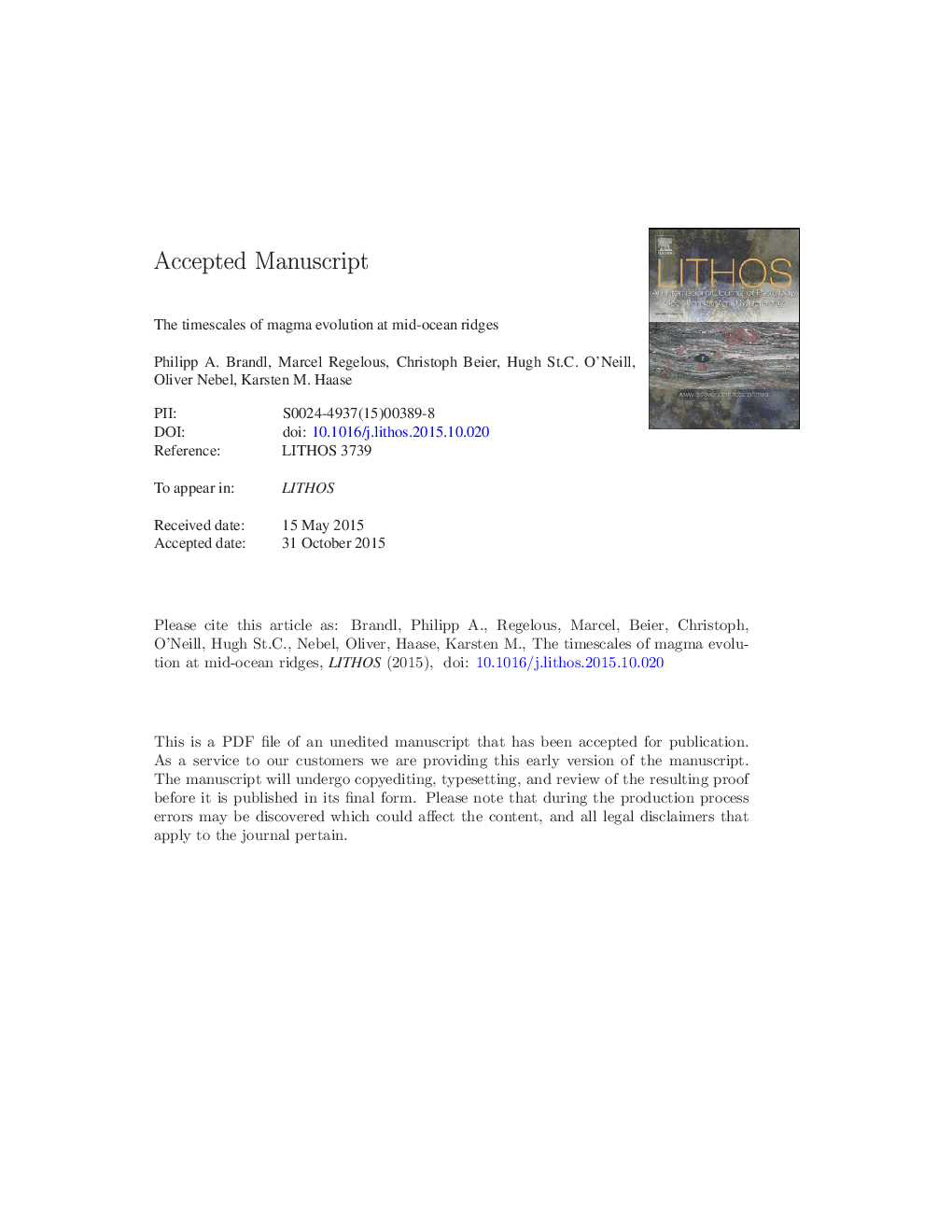| Article ID | Journal | Published Year | Pages | File Type |
|---|---|---|---|---|
| 6440444 | Lithos | 2016 | 54 Pages |
Abstract
We show that drilled MORBs have compositions that are similar to those of young MORB glasses dredged from active spreading ridges (lavas that will eventually be preserved in the lowermost part of the extrusive section covered by younger flows), showing that the dredged samples are indeed representative of the bulk oceanic crust. Model stratigraphic ages calculated for individual flows in boreholes, together with the geochemical stratigraphy of the drilled sections, show that at fast-spreading ridges, magma compositions vary over <Â 100 to 1000Â a, likely due to variations in the relative rates of crystallisation and melt recharge. However, on longer timescales of 10 to 100Â ka, variations in the composition of the primitive melt feeding the ridge lead to chemical variations in the erupted lavas, likely as a function of thermal and/or chemical heterogeneity of the mantle source. The further understanding of these temporal variations in magma composition, especially at shorter timescales of less than a few centuries, is a promising area for future research.
Related Topics
Physical Sciences and Engineering
Earth and Planetary Sciences
Geochemistry and Petrology
Authors
Philipp A. Brandl, Marcel Regelous, Christoph Beier, Hugh St.C. O'Neill, Oliver Nebel, Karsten M. Haase,
